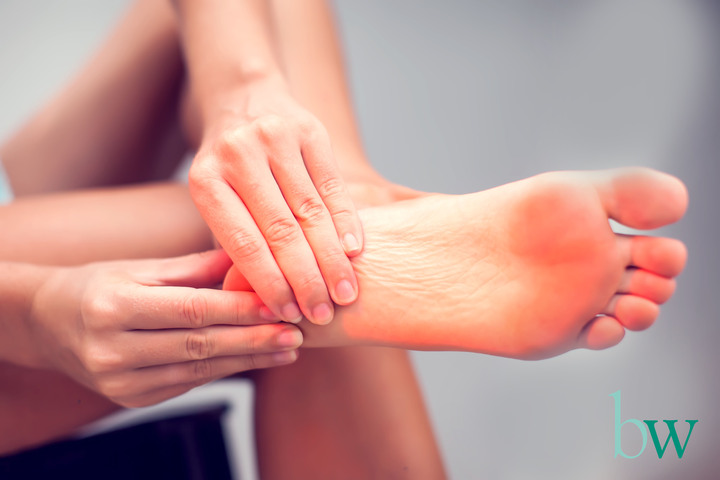Plantar – base of the foot
Fascia – stretchy, strong connective tissue that helps stabilize your muscles throughout the body.
Itis – inflammation.
So combine them and we get . . . . . .
Plantar fasciitis – inflammation of the connective tissue which runs from the heel to the base of your toes
How does it feel?
It often starts as a dull, intermittent pain in the heel or arch of the foot which becomes a sharp, persistent and often piercing pain spreading throughout the foot.
This pain is often worst first thing in the morning or after resting. Pain can often ease with the first few steps of the day and then increase as the day goes on.
If left untreated, the pain can spread to include your Achilles tendon (which is connected to the Plantar Fascia) and begin to affect your knees or become Heel Spur Syndrome.
What causes Plantar Fasciitis?
Flat feet or high arch, plantar fasciitis doesn’t discriminate!
When the toes go one way and the heel in the other with the arch collapsing or straining you twist the plantar fascia underneath.
This causes the fascia to become inflamed and painful, stiff and generally unhappy.
What can I do?
- Wear the right shoes – good arch support is key and heel support helps too. Flat, plastic flip flops are the worst so you might be in more pain over the summer
- Add support – If you can’t find good shoes that you like, a simple orthotic / insole will help too. Again, make sure that it has a good arch support and a proper heel cushion (hint – you won’t find one with enough support in Mercadona!)
- Stretch and massage – stretching the calf will help to stretch the plantar fascia and massaging the base of the foot will help you feel more comfortable – check out our blog for detailed stretch and massage routine.
- Ice – a lovely option in summer! Half fill a small water bottle, put it in the freezer and roll the icy bottle under your foot – an icy stretch for a double win.
Treating plantar fasciitis is a two prong approach – first you have to bring down the inflammation to stop the pain and then help the foot to stop twisting it so that it doesn’t come back.
With the right shoes and a regular stretch and massage routine you should be able to resolve the problem. However if the pain doesn’t ease within 2 weeks get in touch with a professional!
Got More Questions you want answered? Come to our FREE Foot Pain Seminar at 11.30 on Wednesday 18 September with our consultant musculoskeletal Specialist Estelle Mitchell. (booking recommended! 952 883 151 info@TheBodyworksClinic.com WhatsApp – 699 703 936)


